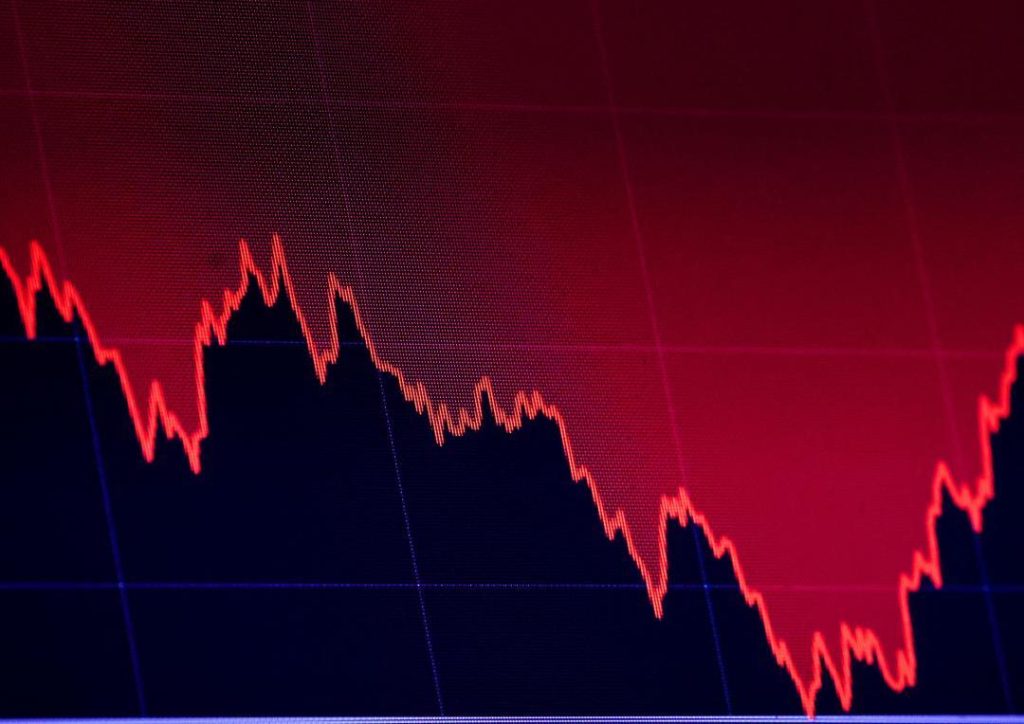
Bloodbath in US Markets: S&P 500 and Nasdaq at Over 6-Month Lows
The US stock market has experienced a tumultuous start to the week, with major indices plummeting to their lowest levels in over six months. The S&P 500 and Nasdaq composite indexes took a beating on Monday, fueled by growing concerns over US President Donald Trump’s upcoming announcement of tariff plans.
As of 09:44 am (US time), the S&P 500 was down 81.90 points (1.47%) to 5,499.04, while the Nasdaq composite fell 409.48 points (2.36%) to 16,913.52. The sharp decline in the indices was driven by a massive selloff by investors, who are increasingly worried about the potential impact of Trump’s tariff plans on the global economy.
The market’s sharp decline is a stark reminder of the volatility that has characterized the past few months. The S&P 500, which has been hovering around the 5,700 level for several weeks, has now fallen below its 50-day moving average. This technical indicator is often used by traders to gauge market sentiment, and a breach below this level is typically seen as a bearish sign.
The Nasdaq composite, which has been driven higher by the tech sector in recent months, has also fallen sharply. The index has now fallen below its 200-day moving average, which is a key level that many traders use to gauge the overall health of the market.
So, what is driving the market’s decline? The main culprit is the uncertainty surrounding Trump’s tariffs. The President has announced plans to impose tariffs on up to $2 billion worth of steel and aluminum imports from several countries, including China, the European Union, and Canada. While the tariffs are intended to protect US industries, they are also likely to lead to retaliatory measures from other countries, which could have a negative impact on the global economy.
Investors are worried that the tariffs could lead to a trade war, which could have far-reaching consequences for the global economy. A trade war could lead to higher prices for goods and services, reduced trade volumes, and even recession. As a result, investors are becoming increasingly risk-averse, leading to a sharp decline in stock prices.
The market’s decline is also being driven by concerns over the overall health of the US economy. While the economy has been growing steadily over the past few years, there are growing signs of weakness. The US Federal Reserve has been cutting interest rates to stimulate growth, and there are concerns that the economy may be heading into a slowdown.
The US manufacturing sector has been experiencing a decline in recent months, and there are concerns that this trend could continue. The Institute for Supply Management (ISM) has reported that its manufacturing index fell to 49.1 in March, indicating a contraction in the sector. This decline is likely to have a negative impact on the overall economy, leading to a decline in stock prices.
In addition to the concerns over tariffs and the economy, investors are also worried about the impact of the ongoing COVID-19 pandemic on the global economy. The pandemic has had a significant impact on the global supply chain, leading to shortages of goods and services. This has had a negative impact on the economy, leading to a decline in stock prices.
In conclusion, the sharp decline in the US stock market is a clear indication of the growing concerns over the potential impact of Trump’s tariff plans on the global economy. While the tariffs are intended to protect US industries, they are also likely to lead to retaliatory measures from other countries, which could have a negative impact on the global economy. As a result, investors are becoming increasingly risk-averse, leading to a sharp decline in stock prices.
Source:
https://www.reuters.com/markets/us/futures-tumble-tariffs-fuel-recession-worries-2025-03-31/






